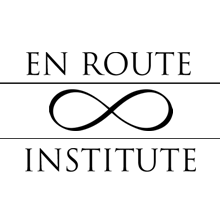@porterv16071
Profile
Registered: 1 week ago
The Science Behind Stem Cell Therapy and Its Potential
Stem cell therapy has captured the attention of scientists, healthcare professionals, and patients alike resulting from its remarkable regenerative capabilities. As research continues to advance, the potential applications of stem cell therapy have gotten increasingly various, providing promising avenues for the treatment of conditions once considered incurable.
What Are Stem Cells?
Stem cells are the body’s raw materials—cells from which all different cells with specialised capabilities are generated. They will divide and renew themselves over long intervals and have the unique ability to distinguish into varied cell types such as muscle cells, nerve cells, or blood cells. There are two primary types: embryonic stem cells and adult (or somatic) stem cells. More just lately, scientists have developed induced pluripotent stem cells (iPSCs), which are adult cells reprogrammed to behave like embryonic stem cells.
How Stem Cell Therapy Works
Stem cell therapy involves the usage of stem cells to repair, replace, or regenerate damaged tissues and organs. This is completed either by encouraging the body’s own stem cells to start the repair process or by introducing new stem cells into the body. These cells could also be sourced from the patient’s own body (autologous) or from a donor (allogeneic).
As soon as administered, the stem cells migrate to the site of injury or disease and start the healing process. They could stimulate the surrounding cells to operate more efficiently, modulate immune responses, or directly replace damaged cells.
Medical Conditions Being Treated
While stem cell therapy is still largely within the experimental stage for many applications, a number of treatments have already gained regulatory approval or are widely utilized in practice. For instance, bone marrow transplants using hematopoietic stem cells have been used for decades to treat leukemia and lymphoma.
Research is actively ongoing into how stem cells may also help treat neurodegenerative diseases like Parkinson’s and Alzheimer’s, spinal cord accidents, heart illness, diabetes, osteoarthritis, and even autoimmune disorders like multiple sclerosis. In the orthopedic discipline, stem cell injections are being studied for cartilage repair and joint regeneration.
The Science Behind the Promise
The potential of stem cell therapy lies in its ability to harness the body’s own healing mechanisms. Via a process known as differentiation, stem cells can change into any type of tissue required for repair. Scientists are also exploring the usage of bioengineered scaffolds mixed with stem cells to develop new tissues and organs in the lab, which could revolutionize organ transplantation.
Additionally, stem cells exhibit anti-inflammatory and immunomodulatory properties. This makes them attractive for conditions the place inflammation plays a critical function, equivalent to rheumatoid arthritis and Crohn’s disease.
Ethical and Safety Considerations
Despite its potential, stem cell therapy raises vital ethical and safety concerns. The use of embryonic stem cells has long been controversial due to the ethical implications surrounding the destruction of embryos. Nonetheless, the development of iPSCs has alleviated some of these issues by offering a way to generate pluripotent stem cells without utilizing embryos.
Safety is one other critical issue. Since stem cells can proliferate indefinitely, there is a risk of uncontrolled progress, which might lead to tumor formation. Making certain proper cell differentiation and avoiding immune rejection are active areas of research aimed at minimizing these risks.
Looking Ahead
The field of stem cell therapy is evolving quickly, with clinical trials underway world wide to test new applications. Advances in genetic engineering, biomaterials, and delivery mechanisms are serving to to overcome current limitations. As understanding deepens and technology improves, stem cell therapy is predicted to play a major function in personalized and regenerative medicine.
Whether repairing a damaged heart, regenerating nerve tissue, or reversing the effects of aging, stem cell therapy affords a robust glimpse into the future of medical science—one the place healing begins at the mobile level.
If you cherished this article and you simply would like to receive more info concerning Umbilical cord stem cell nicely visit our own web-page.
Website: https://www.vegastemcell.com/
Forums
Topics Started: 0
Replies Created: 0
Forum Role: Participant
